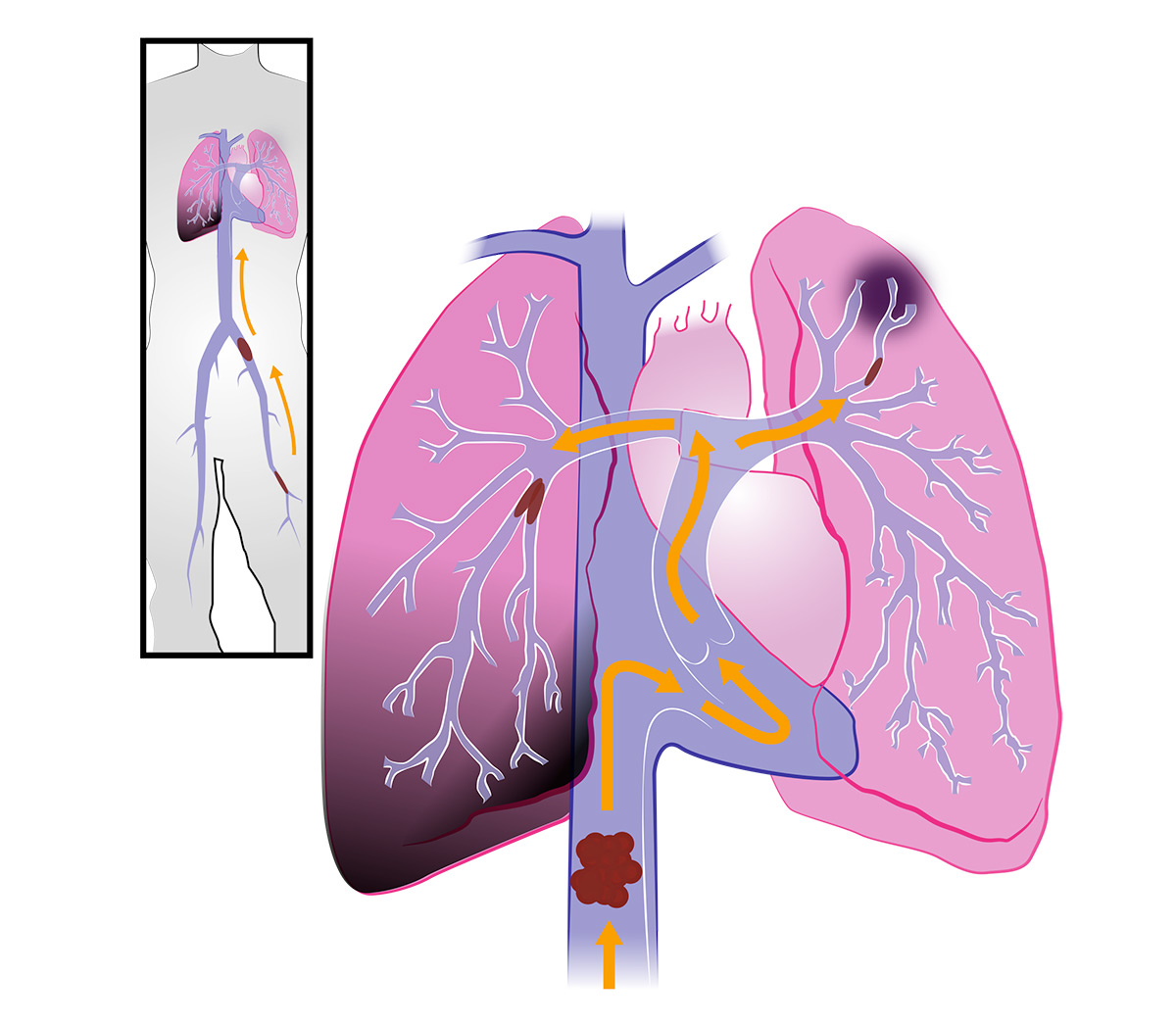Pulmonary embolism
What is a pulmonary embolism (PE)?

Deep vein thrombosis occurs when a blood clot forms within a vein. The blood clot (also called a thrombus) can break free from a blocked vein (often in a leg) and travel to the lungs, where it can block blood flow to part of the lung. This is known as a pulmonary embolism.
What causes a pulmonary embolism?
Several factors can lead to the formation of a blood clot.
- Risk factors present at birth, including genetic causes that affect the coagulation of blood and increase the risk of formation of blood clots;
- Health conditions that can increase the risk of blood clots. Severe obesity is one example. In some cases, the blood clot may be caused by a temporary situation, such as:
- A prolonged period of immobility (bedrest during hospitalization, a long flight or leg in a plaster cast)
- Surgery
- Pregnancy
- Certain medications (hormonal contraception (ex. “the Pill”) or hormone therapy)
- Cancer
- Inflammatory diseases
More long-term causes include:
Quite often, no specific cause for the pulmonary embolism can be identified. In such cases, the pulmonary embolism is said to be idiopathic (of unknown cause).
How can you know if you have a pulmonary embolism?
In most cases, a pulmonary embolism will make you short of breath and cause pain in your chest. This pain sometimes worsens when you take deep breaths, but not all the time. The medical term for this is pleuritic pain.
Other rarer symptoms of pulmonary embolism are a dry cough or bloody sputum.
Pulmonary embolisms can also cause loss of consciousness (fainting), or cardiac arrest/heart attack.
Pulmonary embolisms are often caused by deep vein thrombosis. If the symptoms of a pulmonary embolism occur at the same time or shortly after the onset of symptoms of deep vein thrombosis, the chances of suffering a pulmonary embolism are very high.
A pulmonary embolism occurs when a clot breaks away from the walls of the veins and blocks the circulation all at once. The symptoms described above are sudden. If you develop any of these symptoms, go to the nearest emergency room immediately!
Notez qu’il se pourrait qu’un professionnel détecte une embolie pulmonaire par hasard lors d’un scanner du thorax fait pour une autre raison. Même si vous n’avez pas eu de symptômes, il est possible que votre pIt should be noted that a health professional may detect a pulmonary embolism by chance during a chest scan done for another reason. Even if you haven’t had any symptoms, it is possible that your professional will still recommend treatment.
What are the possible complications of a pulmonary embolism?
A pulmonary embolism can lead to death, which is the most feared short-term effect. If several clots block the vessels in the lungs, the heart has to work much harder to move blood through them, and this can result in heart failure. But this complication is rare if the pulmonary embolism is treated properly.
Over a longer period of time, people with a pulmonary embolism may have high pressure in the blood vessels leading from the heart to the lung circulation (pulmonary hypertension). The discomfort (symptom) experienced is shortness of breath that develops or increases several months after a diagnosis of pulmonary embolism. It is very important to recognize this complication, as it is treatable.